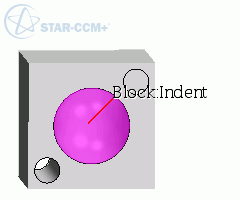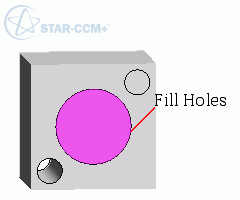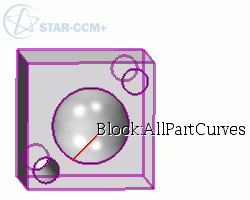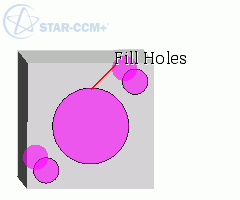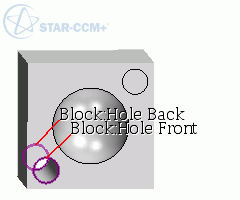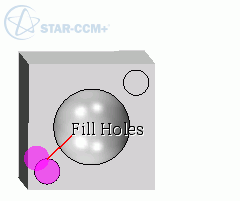Fill Holes
You can use the Fill Holes operation to fill gaps in the geometry with a closed surface.
Fill Holes Properties
Use the Fill Holes properties to define the areas which you want to fill.
|
Input Parts |
Specifies the geometry parts on which the operation fills holes. If you use a derived part that is the result of a mesh operation, also select the inherited parts which contain the inherited part surfaces and inherited part curves. |
|
|
End Surfaces |
Available to specify when Input Parts are specified. Specifies the location of the part surfaces that contain gaps that you want to fill. |
|
|
End Curves |
Available to specify when Input Parts are specified. Specifies the location of the part curves that you want to fill. |
|
|
Output Parts |
The name of the output part that the operation generates (read-only). |
|
Fill Holes Example
The following geometry contains a hole, an indent, and an existing filled surface. You can fill any or all of these areas using the fill holes operation.
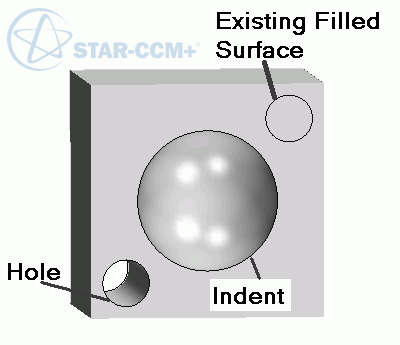
| Example Action | Example Result |
|---|---|
|
Set End Surfaces as the part surface on which there are gaps that define the hole, the indent, and the existing filled surface.  |
A new surface is created to fill all of the gaps within the selected part surface. 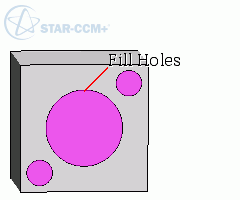 The surface that is created can be split into separate part surfaces. See Splitting Non Contiguous Part Surfaces. |
|
Set End Surfaces as the part surface for the entire geometry part on which there are gaps that define both sides of the hole and both the front and back existing filled surfaces. In this example, the indent is part of the selected surface. 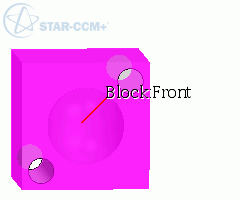 |
A new surface is created to fill all of the gaps that define the front and back of the hole and the front and back existing filled surfaces.  |
|
Set End Surfaces as the part surface which contains gaps that you want to fill. In this example, the gap is the opening to the indent.
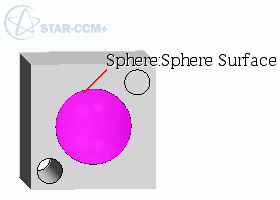 |
In both of these examples, a new surface is created to fill the gap that defines the opening to the indent.
|
| Set
End Curves as all of the part curves, including the part curves that define the gaps of the hole, the indent, and the existing filled surface.
|
A new surface is created to fill all of the gaps within the selected part curves.
|
| Set
End Curves as the specific part curves that enclose the front and back of the hole.
|
A new surface is created to fill all of the gaps that define the front and back of the hole.
|
